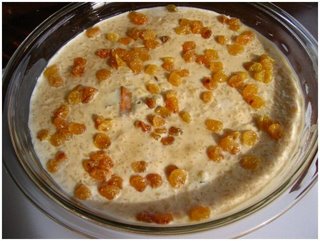Jump to Recipe
Diwali Barbie is what Mattel has come out with.
Those of you who are Barbie fans must have known this already. For me who is not in that league, I heard about it on NPR during my drive back home yesterday. What was exciting is that blogger Anna Johns who writes on SepiaMutiny was interviewed on NPR about her post where she disputes about the fact that Diwali Barbie is really wearing a lehenga and not a saree as Mattel claims. Read her post here. It's nice and encouraging that so many bloggers of Indian origin our dear Indira of Mahanadi fame among them is getting featured on NPR .
Back to Barbie, I have never really liked her, that hour glass figure, that perfect body is too much for me to endure. Mattel must have a real good marketing group because I can hardly imagine little girls being happy playing with a doll who is not cuddly and comfy. Growing up I never had a Barbie, maybe because they were not that IN when I was in the doll playing stage and also because they were pretty expensive. Later too, I felt no liking for her, though I like her accessories. As long as I can I will try to avoid that Barbie for my daughter, a cabbage patch doll is better any day.
Not that my little soon-to-be 3 year old is much interested in dolls, all she wants to do is talk, talk and talk and in the between times jump or hide. She is on this hiding spree these days, maybe this is this age when hide & seek becomes exciting. She drives my Dad around the house hiding in all possible closets and because she is not that patient creature she keeps on shouting from her hiding place. So every time I or anyone else is entering a room we have to say “Oh, so where is S…? Has she gone to school or some such thing” and then she jumps out with a big grin.

So to keep this active little one healthy we have to think up ideas to get those veggies into her. She is not among those angelic creature who eat broccoli with glee and bean without making a scene (sic sic !!) However she loves her “Chicken Jholu Bhatu” (As per her babytalk Jholu in Bengali means a light gravy and Bhatu is rice) and taking advantage of this I put all veggies and make a mutton or chicken stew for her. It tastes really good and you can have it too. with some peppercorns afor yourself
She also like to help me in the kitchen and she likes pounding away to glory on that mortar whenever I am making her Stew
What You Need
Mutton/Chicken ~ about a pound
Onion ~ 1/2 of a small grated to a coarse paste, chopped is also fine
Tomato ~ ½ chopped
Raw Papaya ~ a quarter of a small one peeled and cut into pieces
Beet ~ 1 small chopped, about same quantity as in pic
Potato ~ 1 small chopped into 4 halves
Baby Carrots ~ 5 or more chopped
Beans ~ 5 or more chopped
Note: I didn’t have beans or carrots but usually I put them
For Phoron or Tempering
Elaichi or Cardamom ~ 2
Laung or Cloves ~ 2
TejPata or BayLeaves ~ 2
Darchini or Cinnamon Sticks ~ a small one
Garlic ~ a small clove of garlic finely chopped
Ginger Grated/Paste ~ 1 tsp of fresh paste, you can also use grated or crushed ginger
Yogurt ~ 2 tbsp for marinade
Turmeric Powder
Jeera or Cumin Powder
Salt
How I Do It
Marinade the mutton/chicken with yogurt, a little salt and turmeric powder for about an hour.For Mutton I usually keep it for couple of hours while for chicken half hour is fine
Heat Oil in Kadai/Frying Pan
Temper with TejPata, Elaichi, Laung and Darchini (this is also called as whole Garam Masala). I do not pound them as then it is difficult to fish them out from the stew and you know how kids are !!
Add the onion paste and the finely chopped garlic
Fry with a little sugar (this helps in browning the onion)
Add the tomatoes and sauté a little
Add all the chopped veggies and sauté again for some more time
Add the mutton or chicken.
Add about ½ tsp of jeera powder and mix well
Add 1 tsp of fresh ginger paste or grated ginger
Add salt
Cook for 2 /3 minutes so that the masala mixes well with the veggies and the chicken
Next I transfer the whole thing to my pressure cooker and add water as required for stew.
Pressure cook till the veggies and mutton is done. Beet takes a while to cook and mutton also. If you are making chicken and not using beet, you need not pressure cook.
Add butter to the hot stew and fish out the garam masala while serving to your little one
Can be had as a soup, but my daughter likes it with rice
Trivia: Garam Masala literally translated as "hot spice" is a mixture of several spices mainly Cardamom, Cinnamon, Cloves, Bay Leaves. Occasionally Peppercorn, Nutmeg and Mace is also included in this mixture. Powdered Garam Masala is added to the dish at tle last stage of cooking to enhance the flavor while Whole Garam Masala is often used for tempering. The hot referred to, however, is not hot as in spicy, its meaning comes from ancient ayurvedic medicine, according to which the blend "heats" the body, which is useful in a cold climate







